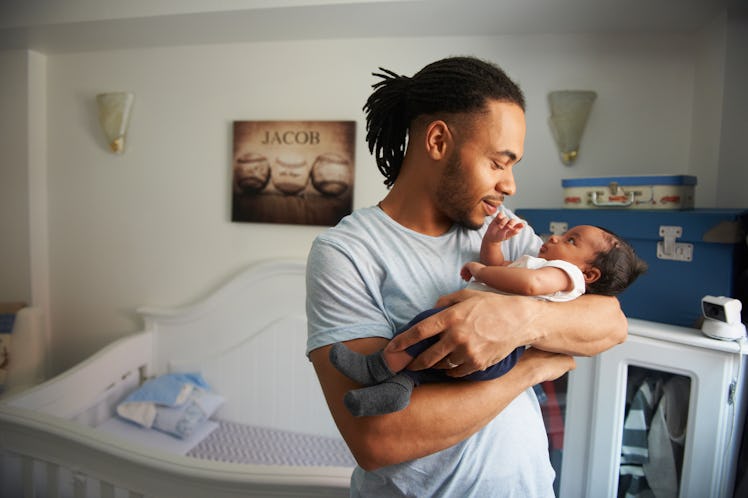When Can Parents Stop Worrying About SIDS?
Newly mobile infants are particularly prone to SIDS, but by the time they approach a year, parents can breathe easier.

One of the largest sources of parental anxiety comes, ironically, when the baby stops screaming and finally goes to sleep. Sudden Infant Death Syndrome haunts parents and kills over a thousand American children a year (1,600 in 2016). Because SIDS is a horrific constant — Mayans imagined a long-beaked bird plucking the life from babies — it’s easy to think of it as an ineffable or vague threat. The truth is that it’s much more preventable than parents initially realize, and like most nightmares, it’s not so terrifying when understood.
“SIDS is kind of this big black box, and another way of saying ‘we don’t know what happened,’” says Amber Kroeker, child injury prevention program coordinator at Randall Children’s Hospital in Portland, Oregon. “Thirty years ago, an infant or baby that suddenly died unexpectedly would be called a SIDS death. Now, because of investigations, we can diagnose babies that had undiagnosed issues at birth, either cardiac or other inborn metabolic issues, and we can give them a diagnosis upon death.”
The number of SIDS deaths has more than halved since 1990, but that doesn’t make it any less scary. The key to shaking off a fear of SIDS, which becomes a real threat about four months into a baby’s life, is a basic understanding what it is: a diagnosis of exclusion. That means it’s the syndrome applied when other explainable diagnoses have been ruled out. It’s basically a blanket term applied in abstract to give a label to unexplainable infant death. Although that doesn’t ease worries that something could happen, the possibility that a child will suddenly perish in the night due to mysterious circumstances is reduced every single day of life.
“After six months, it’s very rare for a baby to die of SIDS. After that, we see them dying from other types of sleep-related death like suffocation, or accidental suffocation and strangulation in bed,” says Kroeker. “That’s tied to mobility. Most babies are starting to wiggle and roll and crawl and move.” The danger, she explains, is when baby wakes up in the night and crawls to a dangerous tight spot, finding themselves caught between the bed and the wall, for instance. “Those are called entrapment deaths.”
Still, the older a baby gets, the more preventable tragedies become, particularly with some vigilance on the part of parents. The American Academy of Pediatrics suggests not using blankets, pillows, or stuffed animals in cribs, though sleep sacks can be used in their place to provide warmth and decreased mobility. Cribs should be placed far from wires, cords, outlets, and other potential strangulation apparatuses. Mattress cracks can be filled in to prevent a baby from falling between and suffocating.
“Take a step back and look at the environment the baby will be sleeping in,” Kroeker says. “If you have an 8-month-old baby and they’re sleeping in a nursery, look for things like strangulation hazards. If kids can find a way to get into mischief, they’ll get into mischief.”
Unfortunately, babies will continue to find new and unexpected ways to deprive parents of sleep and endanger themselves every day. But Kroeker emphasizes that even the scariest of dangers — SIDS and suffocation — are relatively rare in the greater scheme of things, and urges parents to relax. That seems like a tall order, but at least statistics are on parents’ side.
“Don’t let fear drive you to live in a prison. These risks are still really, really small,” she says. “Put it in proportion to understand what risk actually looks like. That first night that your baby sleeps through the night, you wake up at 6 a.m. and you’re like ‘oh my god, why did my baby sleep through the night?’ Don’t. Relax.”
This article was originally published on